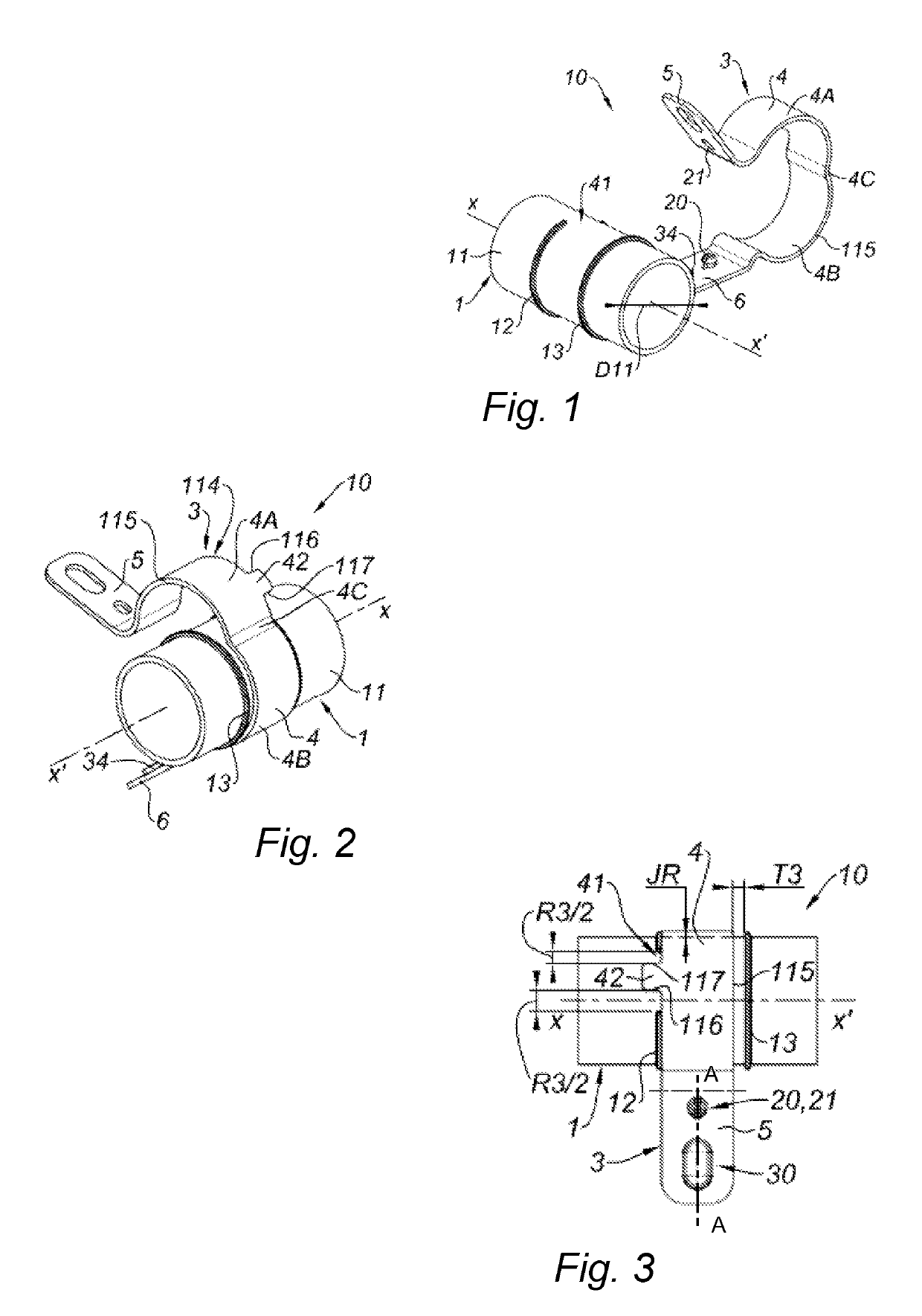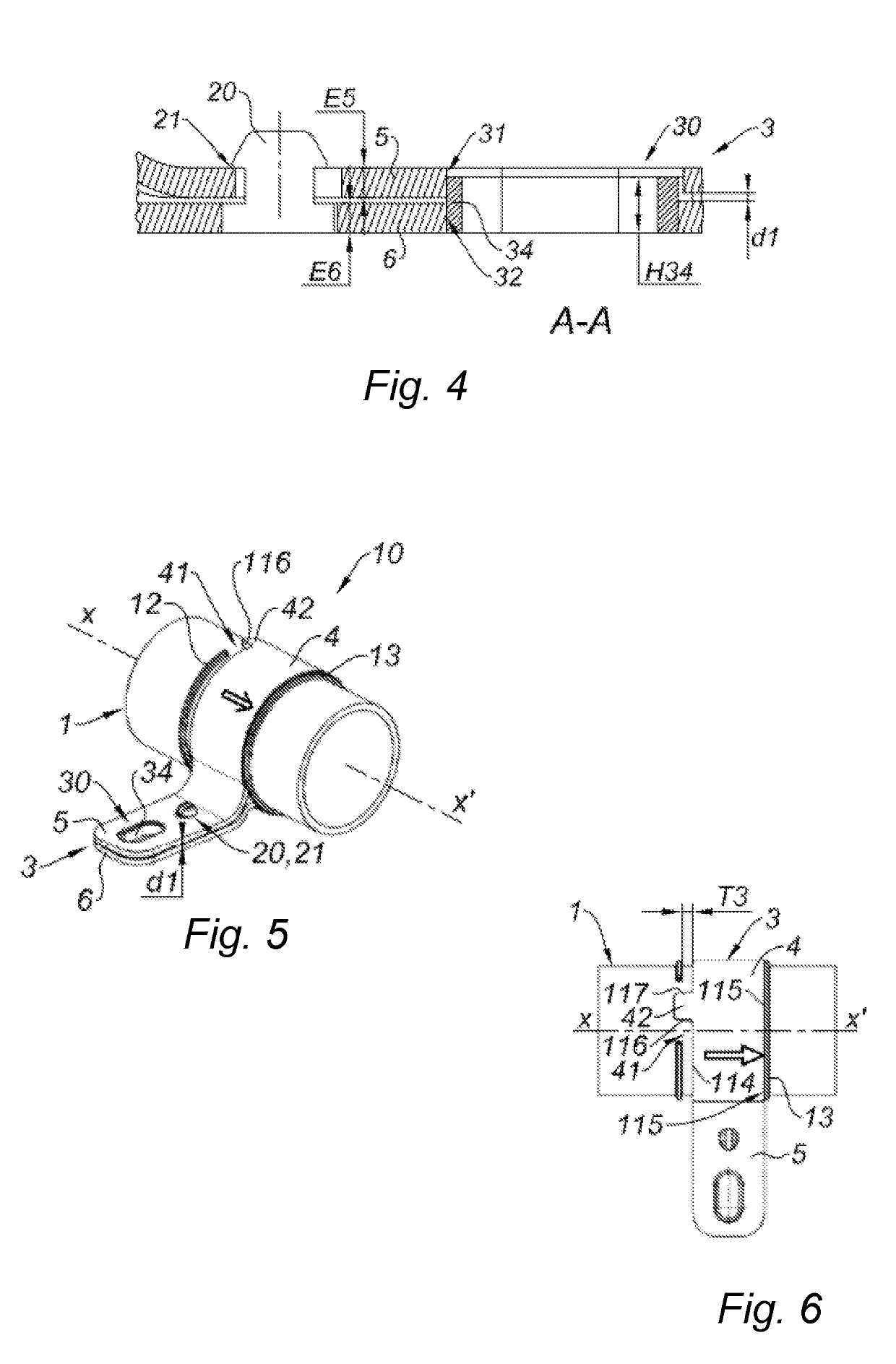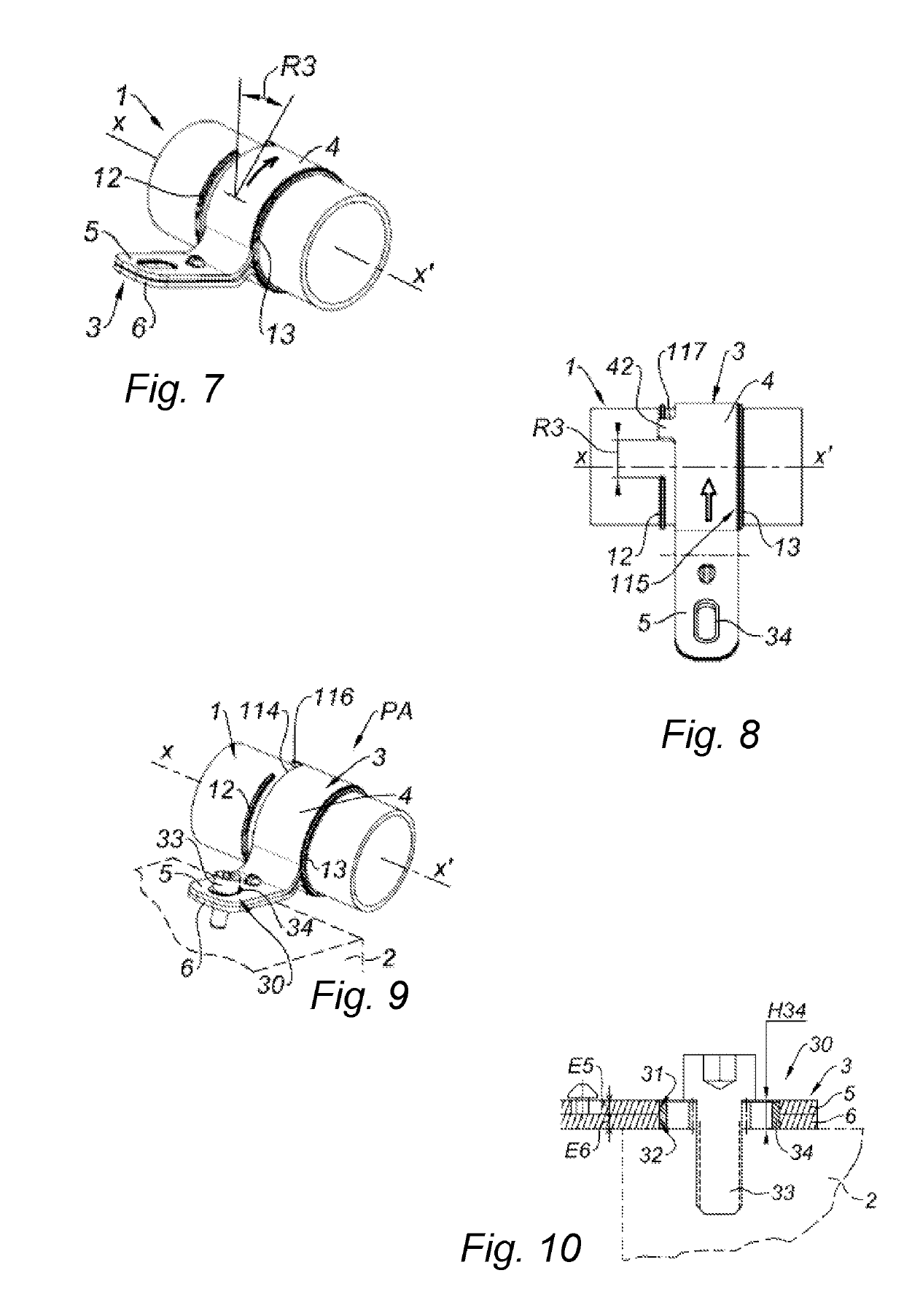Method for fastening a conduit on a support by means of freely adjustable captive flanges
a captive flange, freely adjustable technology, applied in the direction of machines/engines, combustion air/fuel air treatment, charge feed systems, etc., can solve the problems of inability to adjust the relative position of the flange, the manufacturing of such flanges constituted of several components, and the inability to manufacture such flanges of at least one body made of a more rigid material, etc., to achieve simple, rapid and cost-effective implementation, wide variety of manufacturing tolerances
- Summary
- Abstract
- Description
- Claims
- Application Information
AI Technical Summary
Benefits of technology
Problems solved by technology
Method used
Image
Examples
Embodiment Construction
[0035]The present invention concerns a fastening method configured to fasten a mechanical part 1, such as a conduit 1, on a support 2, such as a vehicle engine or chassis, by means of a fastening flange 3, as illustrated in FIG. 9.
[0036]In the following, and for convenience of description, the mechanical part 1 might be assimilated to a conduit, configured to convey any fluid, and more particularly to a conduit configured to convey a fluid called automotive fluid such as, for example, a fuel, air, in particular intake air configured to form an oxidizer within a combustion engine, a gas, a mixture of gas or of liquid and gas, in particular exhaust gases, vapor, in particular an oil vapor, a brake liquid, a coolant, an urea solution for the catalytic depollution of the exhaust gases, a washing solution for windshield washer, etc.
[0037]Said part 1 is preferably made of a polymer material, preferably rigid, and for example made of a thermoplastic polymer such as: polyamide (PA), polybut...
PUM
 Login to View More
Login to View More Abstract
Description
Claims
Application Information
 Login to View More
Login to View More - R&D
- Intellectual Property
- Life Sciences
- Materials
- Tech Scout
- Unparalleled Data Quality
- Higher Quality Content
- 60% Fewer Hallucinations
Browse by: Latest US Patents, China's latest patents, Technical Efficacy Thesaurus, Application Domain, Technology Topic, Popular Technical Reports.
© 2025 PatSnap. All rights reserved.Legal|Privacy policy|Modern Slavery Act Transparency Statement|Sitemap|About US| Contact US: help@patsnap.com



